Look, I’ve been there – standing in the library kids’ section feeling totally overwhelmed by the wall of colorful spines. Which books are actually worth your time? I remember the first time my nephew refused to go to bed without “just one more story” – that’s when I realized the true power of finding the right book for the right child at the right developmental stage.
You know that moment when your kid asks for the same book for the 47th time this week? That’s actually a good thing (even if you’re secretly going insane). Reading with 4-year-olds builds the foundation for their entire relationship with books, language, and learning. The stories you choose now will echo in their minds for years to come, shaping how they see the world and themselves.
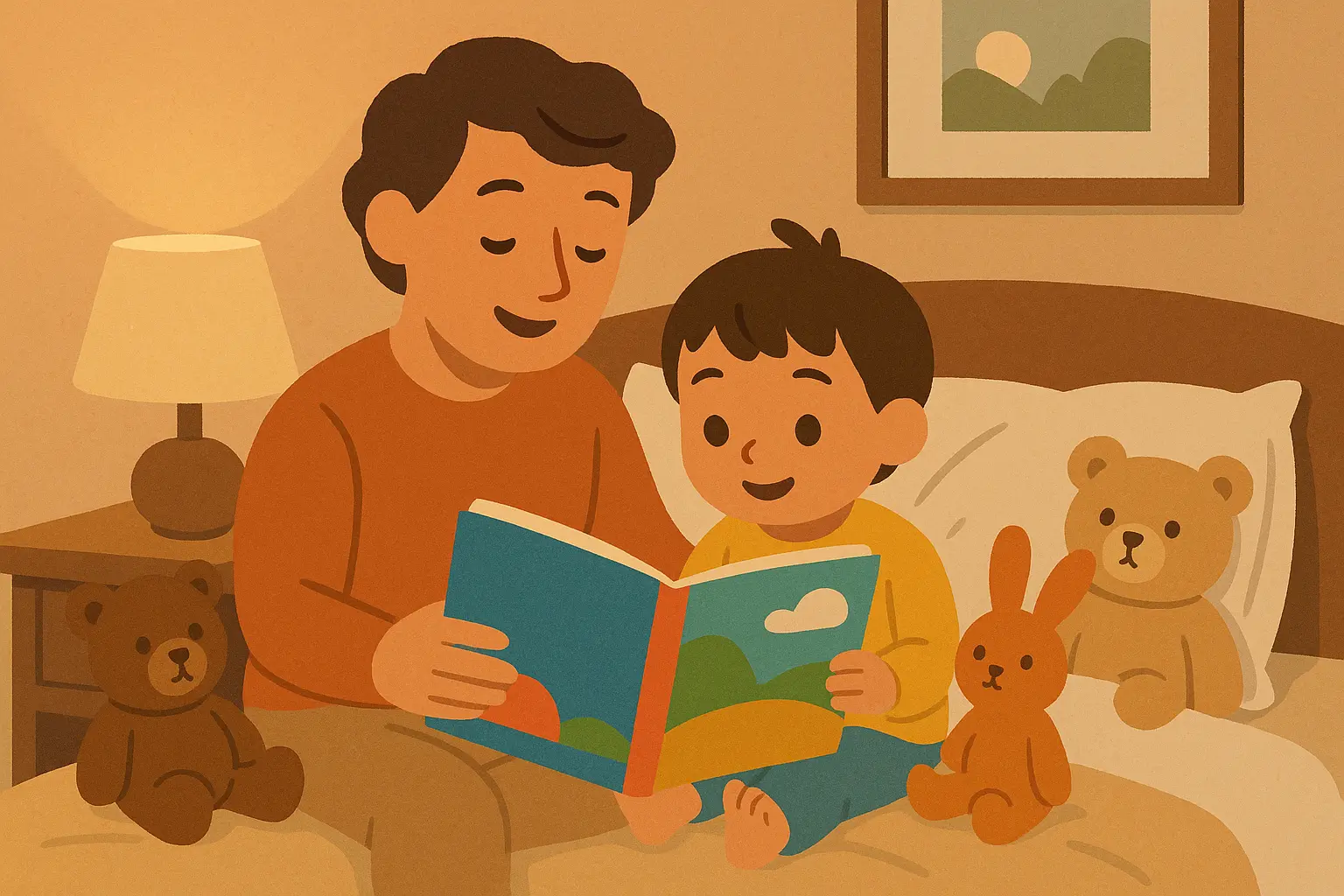
Table of Contents
-
What Makes a Story Perfect for 4-Year-Olds
-
25 Must-Read Stories Organized by Category
-
Bedtime Stories and Comfort Tales
-
Social Skills and Friendship Stories
-
Family and Relationships
-
Adventure and Imagination
-
Learning and Educational Stories
-
Character Building and Values
-
-
Why These Stories Actually Work in Real Life
-
Creating Your Own Stories with Nairrate
-
Final Thoughts
TL;DR
-
Four-year-olds need stories with 10-15 minute attention spans, rich but accessible language, and clear emotional themes
-
The best stories combine engaging visuals with predictable structures that encourage participation
-
Some nights “Goodnight Moon” will work like magic, other nights nothing will work and that’s totally normal
-
Classic tales remain effective when they match developmental needs – follow your kid’s lead
-
Educational stories work best when learning feels incidental to the fun, not the point of it
-
The most successful stories balance entertainment with real emotional validation
-
The magic happens in the sharing – your voice and presence matter more than perfect story time
What Makes a Story Perfect for 4-Year-Olds
Matching Their Developing Minds
Here’s the thing about four-year-olds – they’re like little sponges, but sponges with the attention span of a goldfish. One minute they’re hanging on every word, the next they’re asking if they can have a snack while you’re mid-sentence.
Their sweet spot is about 10-15 minutes before they start fidgeting or wandering off to examine that fascinating dust bunny under the couch. And here’s what blew my mind: they’re picking up 4-6 new words every single day. That’s like learning a new language at warp speed!
The trick is finding stories that challenge them without making their brains hurt. You want rich language, but not “the feline contemplated its elevated position” rich. More like “the big orange cat sat on the wobbly chair” rich. They can handle it, and they love feeling smart when they figure out what “wobbly” means.
I learned this the hard way when I tried reading my nephew a book meant for older kids. Five minutes in, he was building a fort with the couch cushions instead of listening. Lesson learned: match the book to the kid, not your ambitious reading goals.
Emotional and Social Learning Needs
Four-year-olds are basically tiny humans with HUGE feelings and zero filter. They’re figuring out friendship drama, dealing with scary emotions, and trying to understand why they can’t just take their friend’s toy if they want it.
This is where the right stories become like emotional training wheels. When my friend’s daughter was having meltdowns about sharing, we started reading “The Rainbow Fish” every night. Not because I thought it would magically fix everything, but because she needed to see that other characters struggled with the same thing.
And you know what? It worked. Not overnight (nothing with kids works overnight), but gradually she started saying things like “the Rainbow Fish felt lonely when he didn’t share” when she was working through her own sharing moments.
The best stories don’t lecture kids about feelings – they show characters having the same messy emotions your kid has. When the little llama in “Llama Llama Red Pajama” gets scared at bedtime, kids think “Oh good, I’m not the only one who feels this way.”
For parents looking to expand beyond traditional books, exploring personalized kids story creation can provide tailored narratives that address specific emotional situations your child might be facing.
Visual and Interactive Elements That Work
Let’s be real – four-year-olds are visual creatures. They want pictures that tell the story as much as the words do. But not cluttered, overwhelming pictures that make you dizzy just looking at them.
The best books have illustrations that actually help your kid understand what’s happening. Like in “The Very Hungry Caterpillar” – those holes in the pages aren’t just cute, they help kids physically experience the story. My nephew spent weeks poking his finger through those holes, “feeding” the caterpillar.
And repetitive phrases? Pure gold. Kids LOVE knowing what comes next. They’ll chant along with “Brown bear, brown bear, what do you see?” like they’re at a rock concert. It makes them feel smart and involved, instead of just passive listeners.
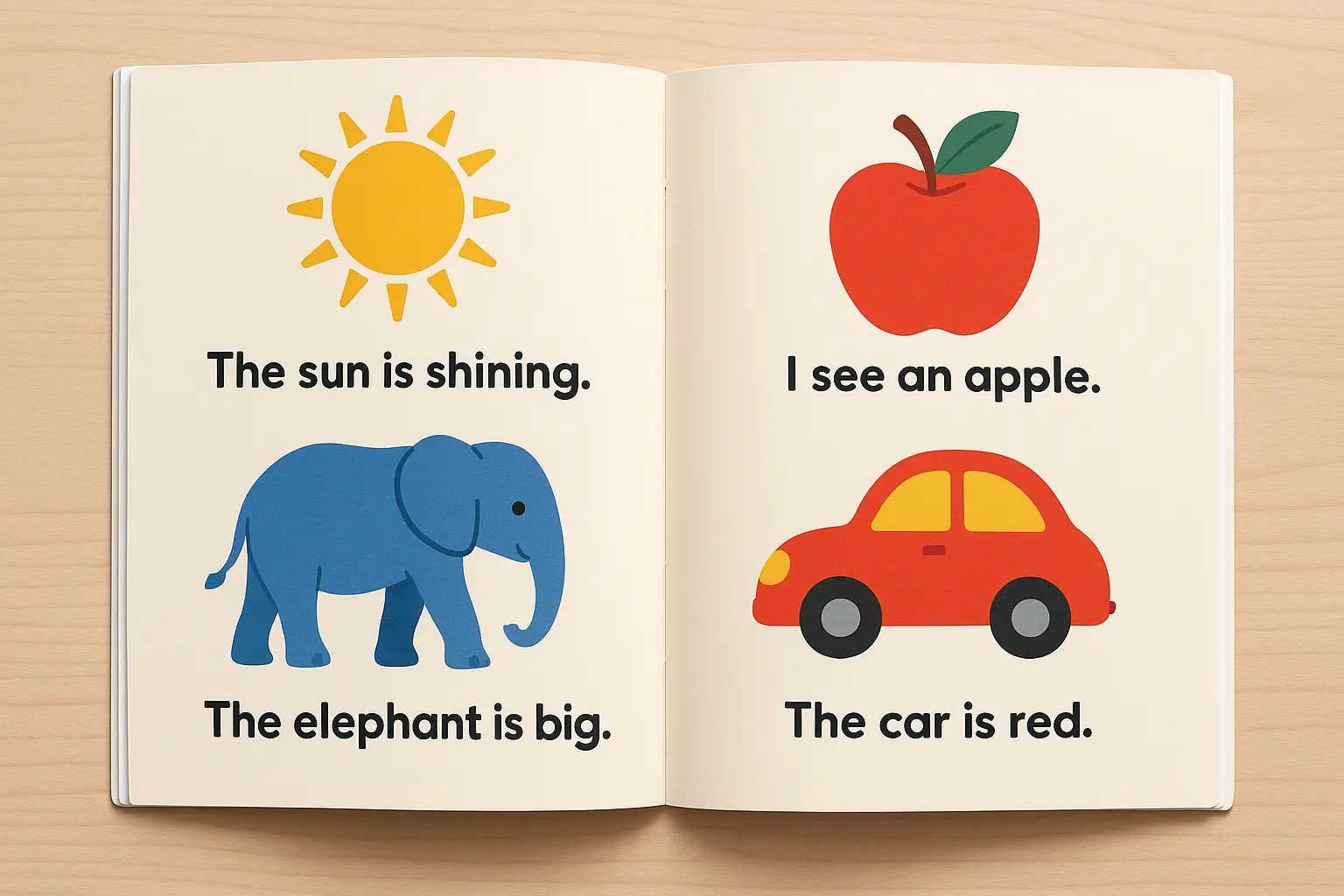
Safety and Content Appropriateness
Nobody wants to deal with nightmares because a “children’s book” had genuinely scary stuff in it. But here’s the thing – you can’t bubble-wrap everything. Kids need stories that acknowledge real emotions and situations, just age-appropriately.
The best stories handle tough topics without traumatizing anyone. Like “The Kissing Hand” – it deals with separation anxiety (which is very real for four-year-olds) but gives them a concrete tool to feel better. It’s not dismissing their fears or pretending everything is sunshine and rainbows.
Cultural sensitivity matters too, especially now. Kids notice when all the characters look the same or when families only come in one configuration. The good news is there are way more diverse books now than when we were kids.
25 Must-Read Stories Organized by Category
Bedtime Stories and Comfort Tales
Look, bedtime can be a battlefield. You’re tired, they’re wired, and somehow “just one more story” turns into forty-five minutes of negotiations. These six books are your secret weapons for actually getting kids to sleep instead of bouncing off the walls.
While these classic tales provide excellent foundations, parents can also explore custom bedtime story creation to craft personalized narratives featuring your child’s favorite characters or addressing specific bedtime challenges.
1. “Goodnight Moon” by Margaret Wise Brown
This book is basically magic. I don’t understand how 130 words can knock out a hyperactive four-year-old, but it works. The rhythm is hypnotic, the pictures get darker as you read, and by the end, even YOU feel sleepy.
My sister swears this book saved her sanity during my nephew’s “I don’t want to go to bed EVER” phase. Pro tip: read it slowly. Like, really slowly. Let the rhythm do its thing.
2. “The Going to Bed Book” by Sandra Boynton
Sandra Boynton gets kids. This book makes bedtime routines look fun instead of like a chore your parents are inflicting on you. The animals brushing their teeth and taking baths are silly enough to make kids giggle, but calm enough not to get them riled up.
Plus, it’s short. When you’re on your third bedtime story and questioning your life choices, short is beautiful.
3. “Llama Llama Red Pajama” by Anna Dewdney
This one hits different because it actually addresses the real fear kids have about being alone at bedtime. The little llama gets scared, calls for mama, and mama comes. It’s not dismissive – it validates that bedtime can feel scary sometimes.
I’ve seen kids calm down just from knowing that other kids (okay, llamas) feel the same way they do. It’s like emotional permission to have bedtime fears while showing them it’s going to be okay.
4. “The Kissing Hand” by Audrey Penn
This book is genius for kids who have separation anxiety, whether it’s bedtime or daycare drop-off. The mama raccoon gives her little one a kiss on his palm that he can feel whenever he misses her.
Kids eat this up. They want their own kissing hand, and honestly, it works. My friend’s daughter still asks for her “kissing hand” when she’s nervous about new situations.
5. “Where the Crawdads Sing” (adapted for children)
Okay, this one’s a bit of a stretch for four-year-olds, but there are simplified versions that focus on finding comfort in nature. If your kid is the type who finds trees and birds calming, this might be perfect for them.
6. “The Rabbit Who Wants to Fall Asleep” by Carl-Johan Forssén Ehrlin
This book is weird, but it works. It’s specifically designed using psychology tricks to make kids fall asleep. The repetitive language and visualization techniques are almost hypnotic.
Fair warning: you might fall asleep reading it. Which, depending on how your day went, might not be a bad thing.
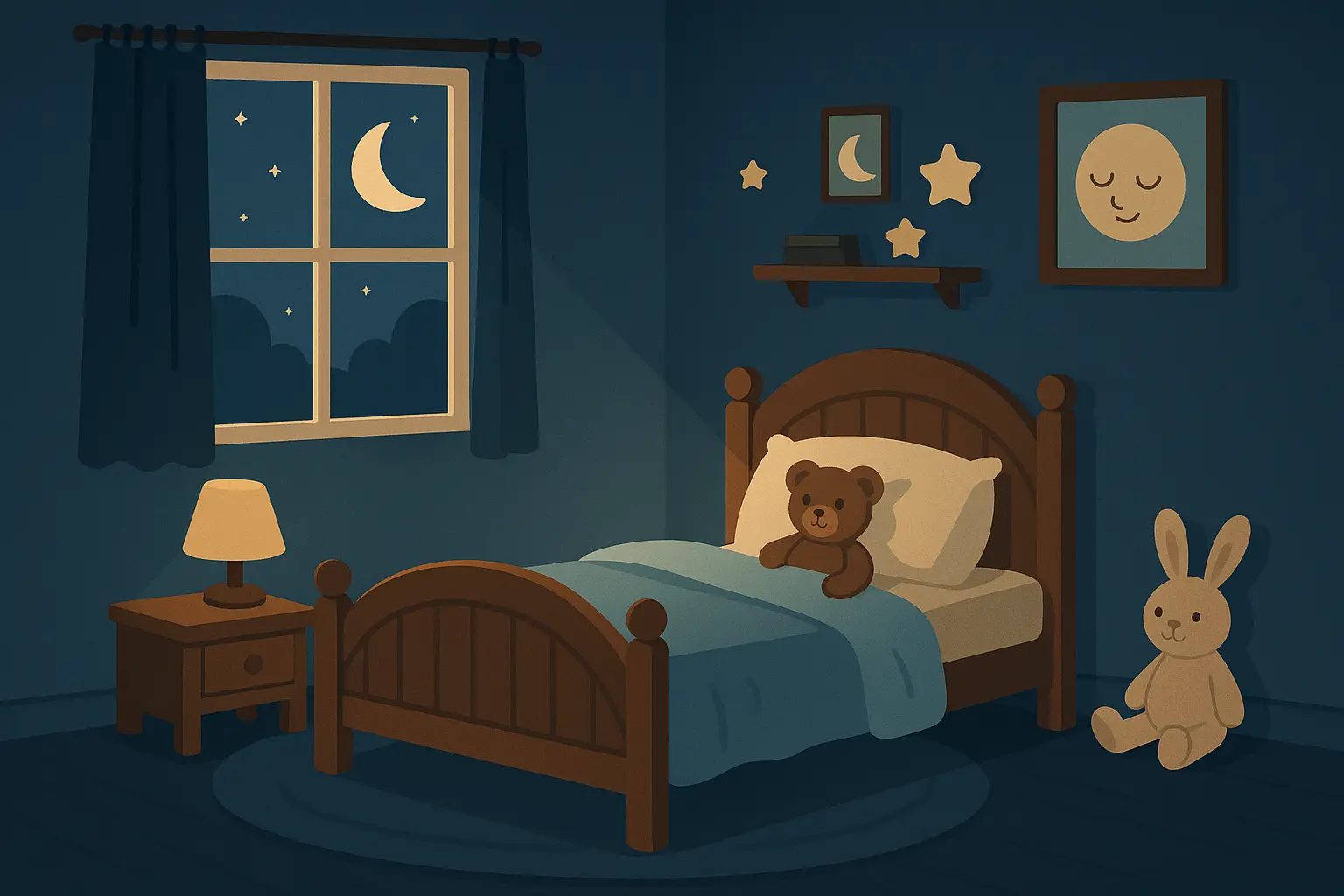
Social Skills and Friendship Stories
Four-year-olds are just figuring out that other people have feelings too. Revolutionary concept, right? These stories help them navigate the complicated world of sharing, friendship, and not melting down when things don’t go their way.
7. “The Rainbow Fish” by Marcus Pfister
This book teaches sharing without being preachy about it. The Rainbow Fish learns that having friends is better than having the prettiest scales, and kids get it. Those shimmery scales are gorgeous – kids understand why the fish doesn’t want to give them away, which makes the lesson more powerful.
My nephew went through a phase where he’d stroke the shiny scales every time we read it. Then one day he decided to share his favorite toy car with his friend “like the Rainbow Fish.” Progress!
8. “Chrysanthemum” by Kevin Henkes
School can be brutal, even in preschool. Kids tease each other about names, clothes, whatever. This book shows a little mouse who loves her name until other kids make fun of it, then learns to love it again.
It’s perfect for kids who are different in any way, or who are starting to notice that being different sometimes feels hard. Plus, Kevin Henkes draws the most expressive mice you’ve ever seen.
9. “The Way I Feel” by Janan Cain
Four-year-olds have BIG feelings but tiny vocabularies for describing them. This book gives them the words: silly, angry, scared, happy. Each emotion gets a full spread with pictures that show what these feelings look like.
It’s like an emotional dictionary, but fun. Kids start using the language from the book to describe their own feelings, which is honestly a parenting win.
10. “Should I Share My Ice Cream?” by Mo Willems
Mo Willems understands the internal struggle of a four-year-old better than anyone. Gerald the elephant wants to be generous, but he also really wants that ice cream. The whole book is his internal monologue about whether to share.
Kids relate SO hard to this. They want to be good, but they also want their stuff. Seeing a character struggle with the same choice makes them feel normal.
11. “Last Stop on Market Street” by Matt de la Peña
This one might need some adult help, but it’s beautiful. A little boy and his grandma take the bus through the city, and she helps him see beauty in places he thought were ugly or boring.
It’s about appreciating what you have and seeing good in unexpected places. Heavy topics for a four-year-old, but presented in a way that opens up great conversations.
When reading “The Rainbow Fish” with a 4-year-old, you might pause at the moment when the Rainbow Fish gives away his first scale. Ask your child: “How do you think the little blue fish feels now?” and “How does the Rainbow Fish feel?” This creates a natural discussion about the emotions involved in sharing and helps children connect the story to their own experiences.
Family and Relationships
Family is complicated, even when you’re four. New babies, divorced parents, different family structures – kids need stories that help them make sense of it all.
12. “Mama, Do You Love Me?” by Barbara M. Joosse
This is every four-year-old’s favorite question, asked about a million different ways. “But what if I was really, really bad? Would you still love me?” This book answers that question definitively: yes, always, no matter what.
The Arctic setting is gorgeous, and kids love learning about different cultures. But the real magic is in the reassurance that parental love is unconditional.
13. “The Runaway Bunny” by Margaret Wise Brown
Another classic about unconditional love. The little bunny imagines running away and becoming all sorts of things, and mama bunny always finds a way to stay close and keep him safe.
It’s fantasy play that kids engage in naturally – “what if I ran away?” – but with the comforting message that parents will always love and protect them.
14. “Peter’s Chair” by Ezra Jack Keats
New baby siblings are rough. Suddenly all your stuff is being painted pink and given away, and everyone’s paying attention to this crying little person instead of you.
Peter goes through all the emotions – anger, jealousy, feeling left out – before deciding he’s ready to be a big brother. It doesn’t sugarcoat how hard family changes can be.
15. “Families are Different and That’s Okay” by Nancy Loewen
Not every family looks like the old “mom, dad, two kids” model. This book celebrates all kinds of families – single parents, grandparents raising kids, adopted families, same-sex parents.
It helps kids understand that love makes a family, not a specific structure. Important for kids in non-traditional families and kids trying to understand their friends’ different family situations.

Adventure and Imagination
Four-year-olds live in their imaginations half the time anyway. These stories feed that creativity while sneaking in some life lessons along the way.
16. “Where the Wild Things Are” by Maurice Sendak
Max gets angry, sails away to where the Wild Things are, becomes their king, then comes home to dinner that’s still warm. It’s the perfect fantasy for dealing with big emotions.
Kids get that Max isn’t really sailing anywhere – he’s working through his anger in his imagination. And he comes home because home is where love is, even when you’re mad.
17. “The Very Hungry Caterpillar” by Eric Carle
This book does everything – teaches counting, days of the week, healthy eating, and metamorphosis. But kids don’t care about the educational stuff. They just love poking their fingers through the holes and watching the caterpillar eat everything.
It’s sneaky learning at its best. They think they’re just having fun with a hungry bug.
18. “Corduroy” by Don Freeman
A toy bear goes on an adventure in a department store looking for his missing button. It’s about belonging, friendship, and the idea that being imperfect doesn’t make you less loveable.
Kids who have favorite stuffed animals really connect with this one. They understand that toys have feelings too (obviously).
19. “The Cat in the Hat” by Dr. Seuss
Rainy day boredom solved by a mischievous cat who turns the house upside down. It’s controlled chaos – exciting but not scary, with everything cleaned up by the end.
Dr. Seuss knew how to write books that kids want to read over and over. The rhythm and rhyme make it almost musical.
20. “Dragons Love Tacos” by Adam Rubin
Pure silly fun. Dragons love tacos but hate spicy salsa, which leads to predictable chaos. There’s no deep lesson here – sometimes a story about dragons and tacos is exactly what you need.
Kids think it’s hilarious, and honestly, so do adults. It’s okay to read books just because they’re fun.
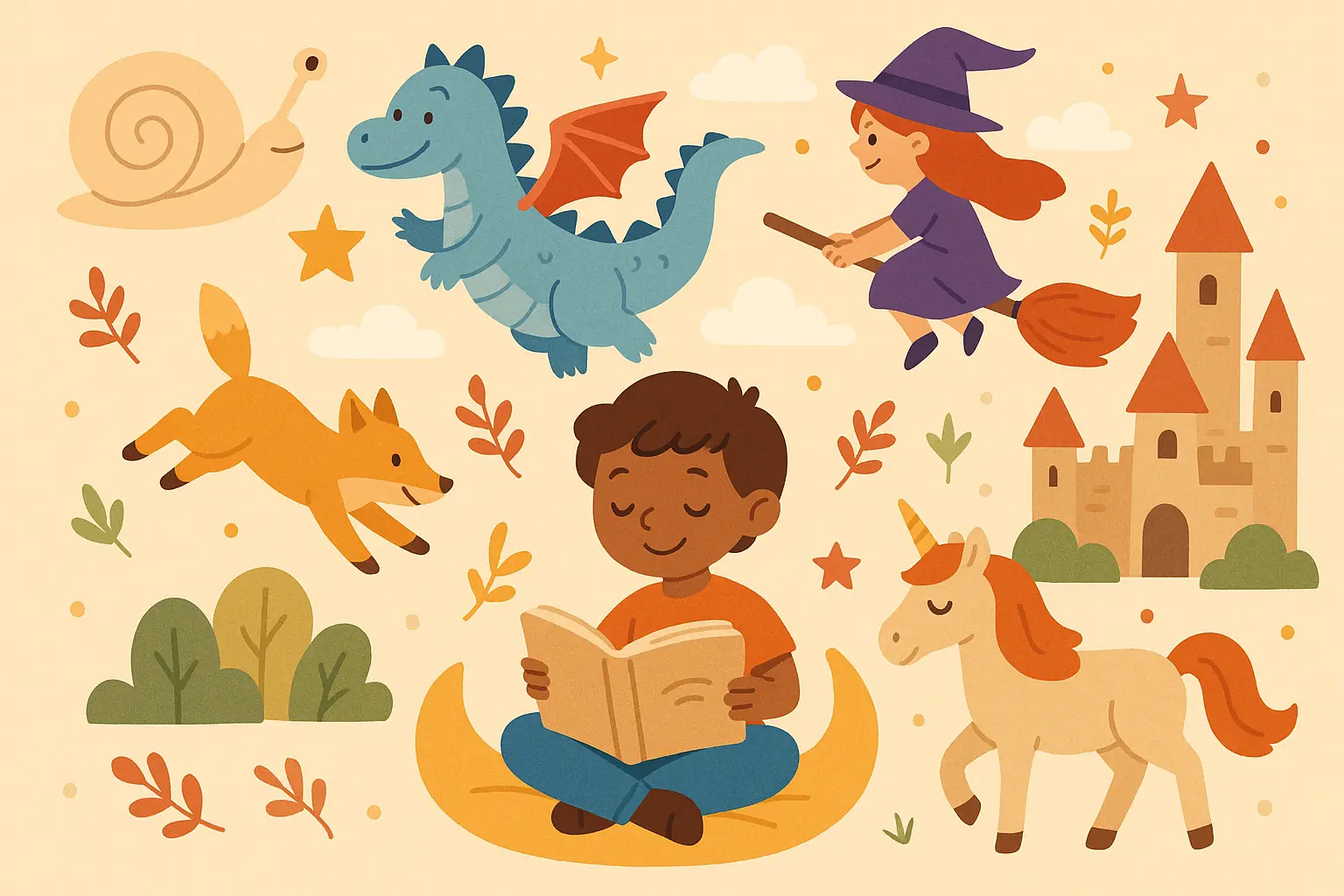
Learning and Educational Stories
Learning disguised as fun – the holy grail of children’s books. These three manage to teach stuff without feeling like school.
21. “Chicka Chicka Boom Boom” by Bill Martin Jr.
The alphabet has never been so exciting. All the letters race up the coconut tree until it bends and they all fall down. Kids memorize this one fast and love chanting along.
It makes letters feel like characters with personalities instead of abstract symbols. Sneaky reading readiness at work.
22. “The Dot” by Peter H. Reynolds
A girl who thinks she can’t draw makes one dot, and her teacher encourages her to sign it. That one dot becomes the beginning of her artistic journey.
It’s about creativity, confidence, and the idea that everyone is artistic in their own way. Perfect for kids who think they’re “not good at art.”
23. “Green Eggs and Ham” by Dr. Seuss
Fifty words. That’s all Dr. Seuss used to tell this story about trying new things. Sam-I-Am persists until his friend finally tries the green eggs and ham – and likes them.
It’s about being open to new experiences, but kids just think it’s funny. The repetition helps beginning readers feel successful.
Character Building and Values
The big life lessons, delivered through stories that don’t feel like lectures.
24. “The Little Engine That Could” by Watty Piper
“I think I can, I think I can, I think I can.” Every parent ends up using this phrase in real life. The little engine that believes in herself and saves the day through determination and positive thinking.
It’s the classic lesson about perseverance, and kids really get it. They start saying “I think I can” when they’re facing their own challenges.
25. “Those Shoes” by Maribeth Boelts
A boy really wants expensive shoes that all the other kids have, but his grandma can’t afford them. It’s about wants versus needs, and ultimately about generosity when he gives the shoes to a friend who needs them more.
Heavy topic handled beautifully. It addresses materialism and peer pressure without being preachy, and shows that giving can feel better than getting.
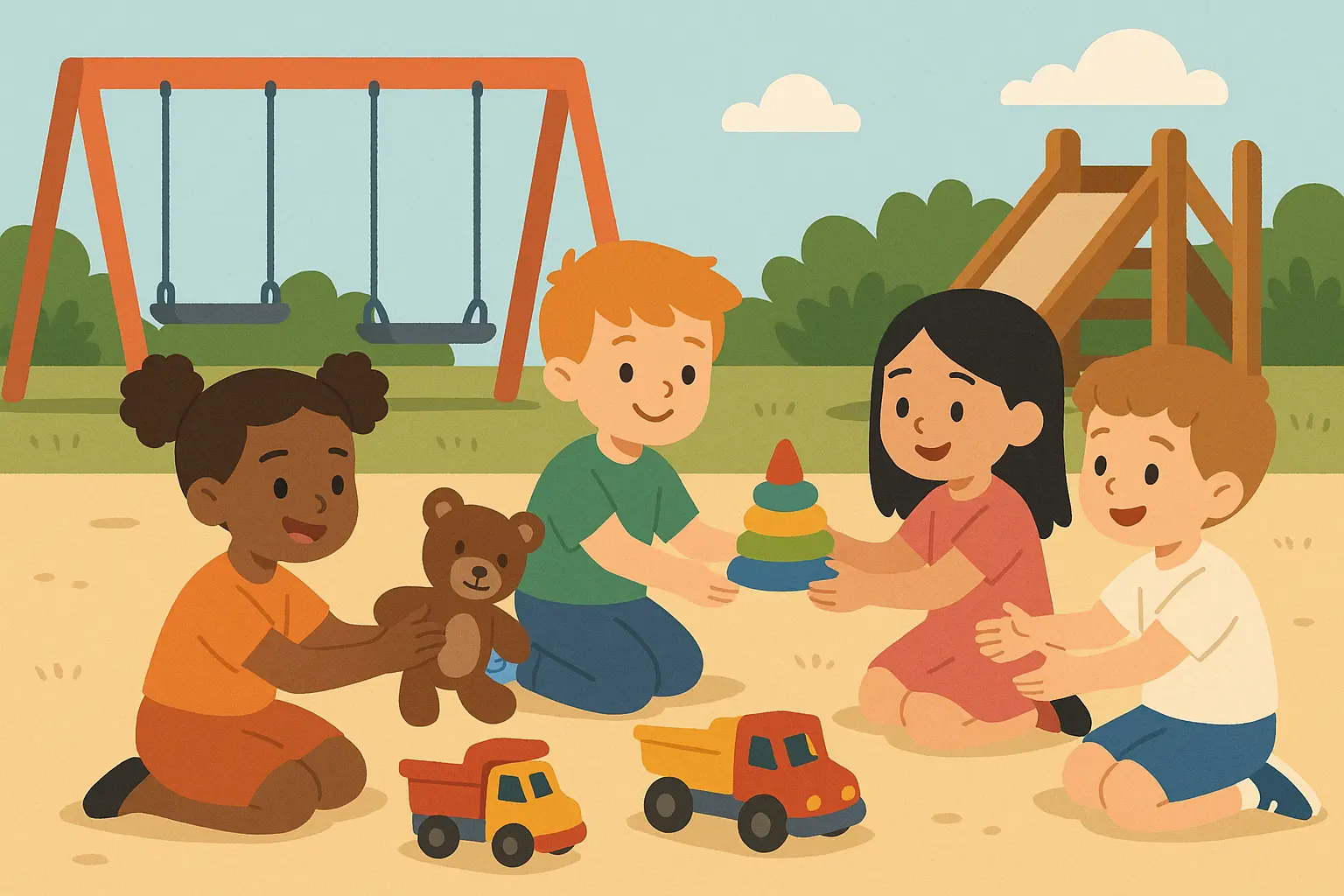
Why These Stories Actually Work in Real Life
What Makes Kids Want to Read Them Again and Again
Let’s be honest – you’re going to read these books approximately 847 times each. Here’s what I’ve noticed makes the difference between books you don’t mind reading repeatedly and books that make you want to hide under the couch.
The Really Good Ones: “Goodnight Moon,” “The Very Hungry Caterpillar,” “Chicka Chicka Boom Boom.” These have rhythm, repetition, and something new to notice each time. Even after the 50th reading, you might spot a detail in the illustrations you missed before.
Pretty Good: “The Rainbow Fish,” “Where the Wild Things Are,” “Corduroy.” These have enough depth to stay interesting for adults while being simple enough for kids to follow independently.
Need Adult Help: “Last Stop on Market Street,” “Those Shoes.” Beautiful books with important messages, but they need discussion to really work. Kids might not get the deeper themes without some guidance.
Which Books Actually Change Behavior
I’m not saying books are magic (though sometimes it feels like it), but some of these really do seem to help kids work through stuff.
Big Winners for Behavior: “The Way I Feel” gives kids vocabulary for emotions, which actually helps them manage feelings better. “Should I Share My Ice Cream?” helps kids understand that struggling with generosity is normal.
Bedtime Game-Changers: “Goodnight Moon” and “Llama Llama Red Pajama” really do seem to make bedtime easier. The rhythm and reassurance work.
Confidence Builders: “The Dot” and “The Little Engine That Could” give kids language for persistence. Don’t be surprised if you hear “I think I can” during challenging moments.
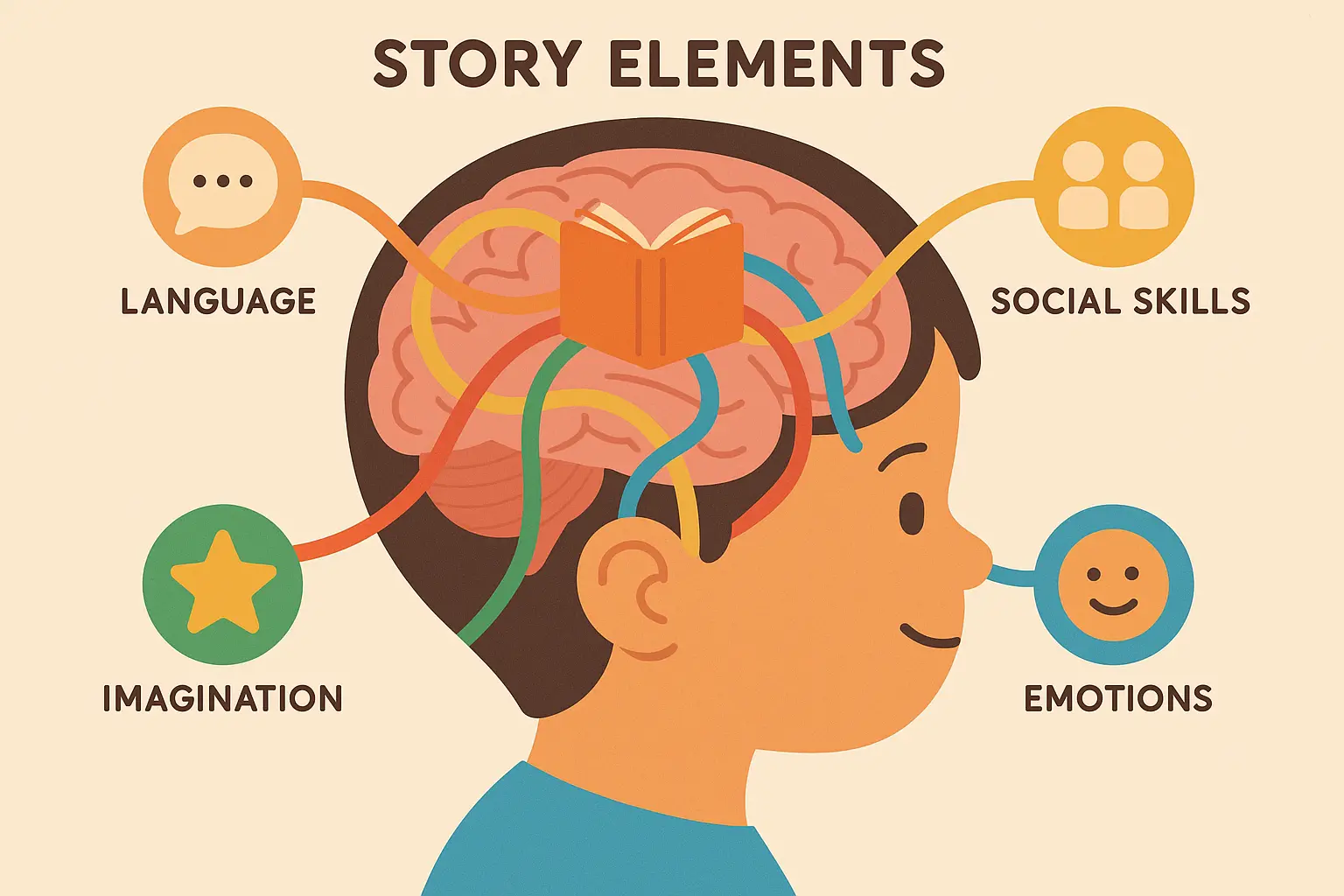
Books That Grow With Your Kid
Some of these books work differently as kids get older, which is awesome because you don’t have to retire them.
“Where the Wild Things Are” starts as a simple adventure story, but older kids start understanding the emotional journey Max goes through. “The Rainbow Fish” begins as a pretty book about sharing, but kids eventually grasp the deeper lessons about friendship and generosity.
“Those Shoes” might be too complex for some four-year-olds, but it becomes more meaningful as they understand money, peer pressure, and social dynamics.

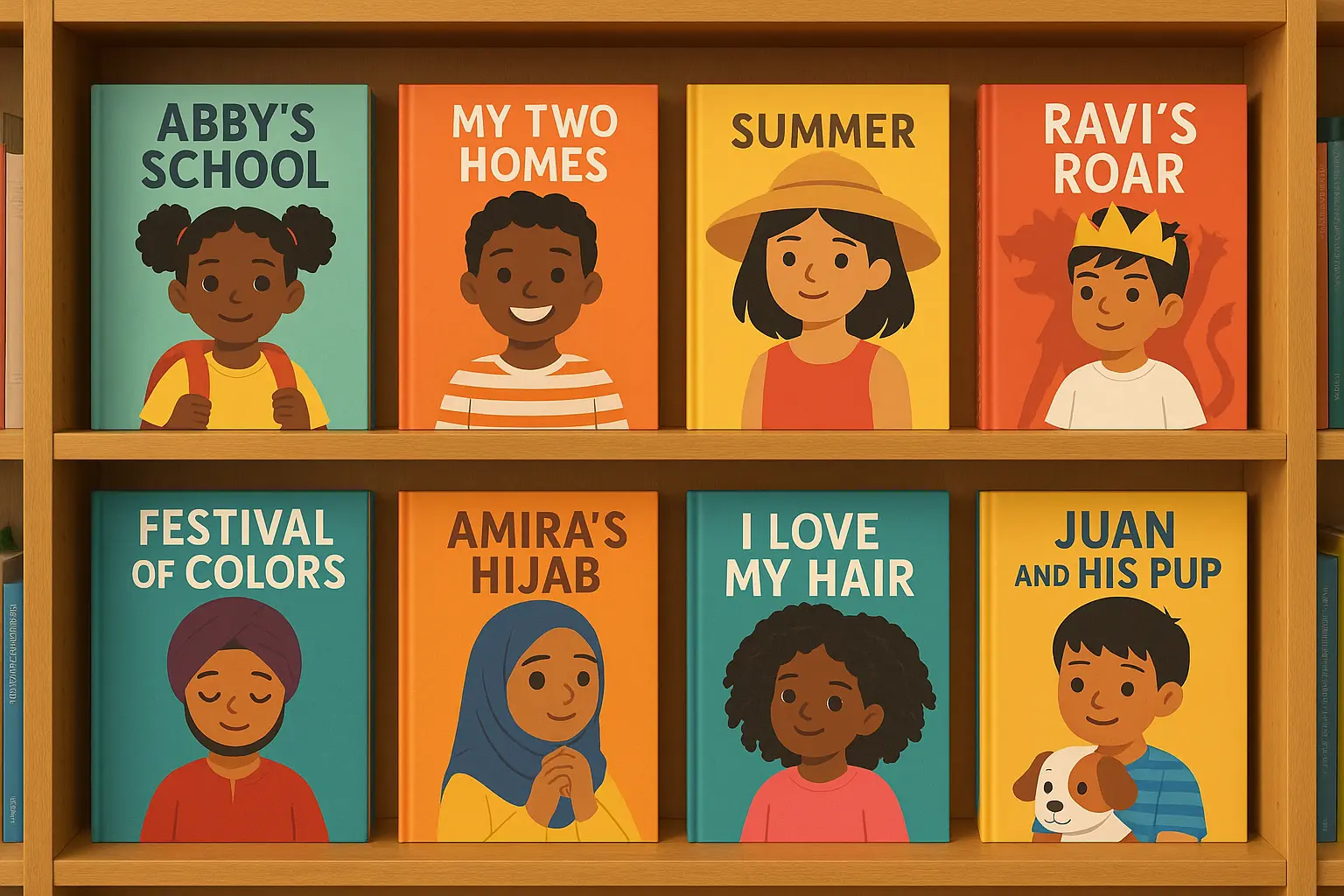
Creating Your Own Stories with Nairrate
Sometimes you need a story that doesn’t exist yet. Like when your kid is terrified of the car wash, or when they’re struggling with a specific friendship issue, or when they want a story about their stuffed elephant going to space (very specific, but it happens).
When Store-Bought Stories Aren’t Enough
Maybe your kid has separation anxiety about a specific situation that no published book addresses. Or maybe they want to see themselves reflected in a story – their family, their culture, their specific interests.
That’s where creating your own stories becomes incredibly useful. You can make a bedtime story featuring your child’s actual stuffed animals, or create a social story about starting at their specific daycare.
Making Stories That Actually Work
The key is following the same patterns that make these 25 books successful. Simple language, clear emotions, predictable structure, and age-appropriate themes.
If you’re making a bedtime story, use the same calming rhythm as “Goodnight Moon.” For social skills stories, follow the cause-and-effect pattern of “The Rainbow Fish.” Don’t reinvent the wheel – use what already works.
Parents can easily craft unique story beginnings that capture their child’s interest while addressing specific bedtime challenges or comfort needs.
Personal Stories Hit Different
There’s something magical about a story made specifically for your child. When the main character has their name, their pet, their specific fears or interests, kids pay attention in a completely different way.
My friend created a story about her daughter’s stuffed bunny learning to be brave at the doctor’s office. Suddenly, doctor visits became easier because the bunny had shown her how to do it.
For more structured narrative development, explore story plot creation tools that help build age-appropriate story arcs with clear beginnings, middles, and satisfying endings.
The beauty of combining these proven classics with personalized content is building on established foundations while addressing individual needs. These 25 stories provide templates for what works developmentally, while custom tools give you ways to create new stories following these same successful patterns.

Final Thoughts
Look, reading with four-year-olds isn’t always Instagram-worthy. Sometimes they want to skip to the end, or tell their own version of the story, or ask “why” about every single page. Sometimes you’re exhausted and just want to get through the book as fast as possible.
That’s all normal and okay.
The magic isn’t in perfect story time – it’s in the connection. Your kid won’t remember if you read with perfect expression or if you discussed all the educational elements. They’ll remember snuggling with you, hearing your voice, and sharing stories together.
These 25 books are starting points, not requirements. Maybe your kid will love all of them, maybe they’ll fixate on three and ignore the rest. Follow their lead.
And remember – the goal isn’t to create a perfect little reader or teach every possible lesson. The goal is to help your child fall in love with stories. Everything else is bonus.
Some nights, “Goodnight Moon” will work like magic. Other nights, nothing will work and you’ll end up reading “Dragons Love Tacos” for the fourth time while your kid does gymnastics on the bed. Both scenarios are parenting wins, just different kinds.
The best stories become part of your family’s language. You’ll find yourself saying “I think I can” during challenging moments, or talking about feeling “silly like the character in our book.” These stories become tools for navigating the world together.
Whether you stick with these classics or venture into creating personalized stories, remember that the most important ingredient is you – your voice, your presence, and your willingness to enter your child’s world through these shared stories.
Reading together is one of the simplest and most powerful things you can do as a parent. It doesn’t require special skills or expensive equipment – just books, time, and the willingness to slow down and share stories with the little person who thinks you’re the most important storyteller in the world.
Yes, you’ll memorize these books. Yes, you’ll find yourself reciting “Goodnight Moon” at random moments. Welcome to parenthood – it’s messier and more wonderful than anyone tells you it’s going to be.



Add comment